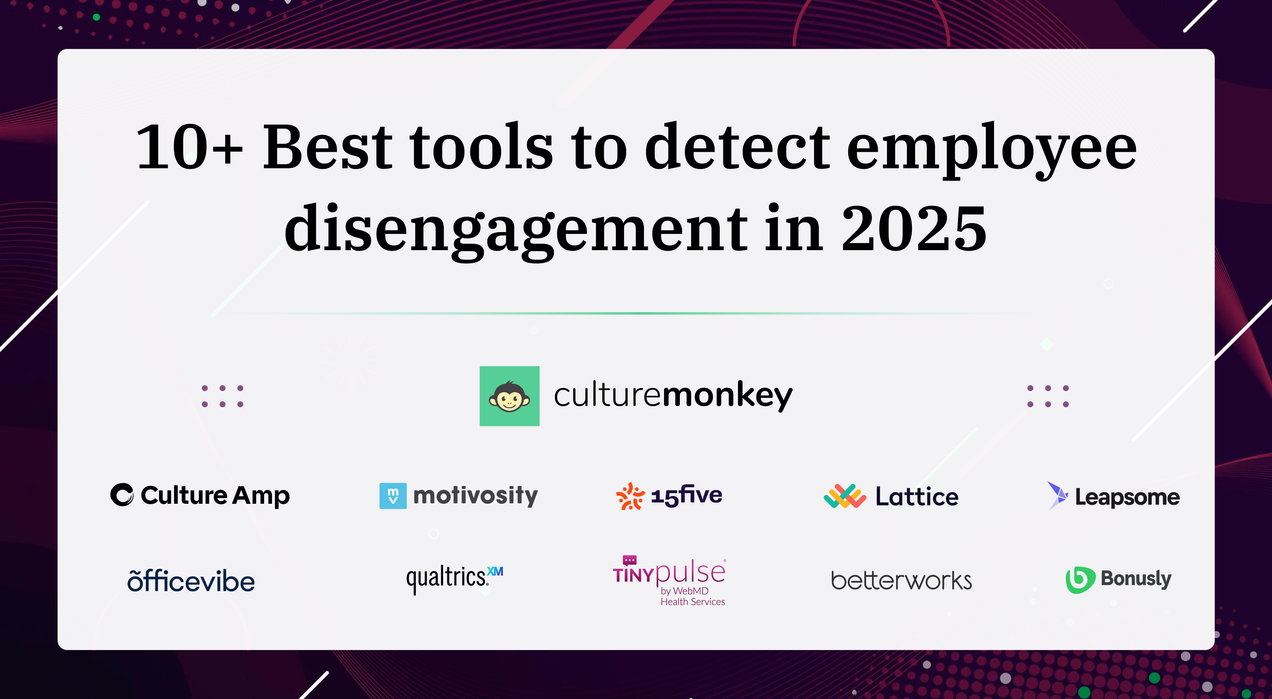75+ Negative feedback examples: Learning and growing from constructive criticism
Transform negative feedback into growth opportunities with our collection of 75+ constructive examples. Learn how to embrace criticism, refine your skills, and enhance your professional journey. Constructive feedback is the catalyst for progress and success.
What is the average cost of employee turnover: Why does it matter & how is it calculated?
High turnover rates can wreak havoc on an organization, extending its impact across various facets of business operations. One of the most immediate concerns is the financial toll. The constant need to replace departing employees incurs significant recruitment costs.
25 Benefits of employee retention you should know in 2025
The significance of employee retention has ascended to unprecedented heights in 2023. As we navigate a world marked by rapid technological advancements, shifting demographics, and a renewed focus on work-life balance, retaining your workforce isn't just a box to check – it's a strategic imperative.
10+ Best tools to detect employee disengagement in 2025
Top tools to detect employee disengagement using pulse surveys, sentiment analysis, and real-time dashboards. Platforms like CultureMonkey, 15Five, WorkTango, Leapsome, and others help identify early warning signs and improve retention through continuous feedback and manager insights.
CultureMonkey and Slack integration for seamless survey delivery
Plug in CultureMonkey with your existing Slack and unlock the wonders of automation in sending employees reminders for unanswered surveys and enhance your feedback participation rates to boost your organization’s productivity and growth.
In-house vs vendor employee surveys: Which approach is best for your organization
Employee surveys are questionnaires used by organizations to gather feedback on topics like engagement, employee satisfaction, communication, and company culture. These surveys help gauge how employees feel about their roles and work environment, providing insights into the workplace culture.
Enterprise employee survey benchmarks: A complete guide for leaders in 2025
Enterprise employee survey benchmarks are reference points that help large organizations evaluate their employee engagement survey results against relevant external standards. Instead of interpreting results in isolation, benchmarks give context, letting you compare your data to industry peers.
75+ Team theme ideas to try at work for increased collaboration in 2025
Team themes at work refer to overarching concepts or focuses that guide the collective efforts and goals of a group within an organization. These themes serve as unifying principles, shaping the team's objectives, culture, and approach to work.
75+ Employee engagement survey questions that you should ask as a leader in 2025
Discover over 75 essential employee engagement survey questions every leader should ask in 2025 to gain valuable insights, foster a positive culture, and enhance team satisfaction and productivity. This comprehensive guide provides the tools to craft impactful surveys that drive real results.
Strengths in the workplace: Examples & tips to improve your people development plan
From leadership to creativity, discover examples of individual strengths that fuel success. Craft people development plans that focus on these strengths, boosting engagement and productivity. Learn how to align talents with roles and create a thriving, motivated team.
35+ Dichotomous questions and survey strategies to boost response in 2025
Dichotomous survey questions improve how data is collected, providing simplicity, efficiency, and precision in gathering responses. This format offers researchers a powerful tool to measure customer satisfaction, assess employee engagement, and gather valuable insights across various organizations.
20 Employee engagement survey ideas to get honest and actionable feedback in 2025
In 2025, with hybrid work, evolving tech, and rising employee expectations, HR needs sharper tools to keep up. That’s why employee engagement survey ideas matter more than ever—they help you hear what’s not being said, measure employee engagement outcomes, and ultimately improve employee retention.
Employee engagement measurement to boost productivity and culture in 2025
CultureMonkey's method of measuring employee engagement metrics would help you determine your employees' engagement at the workplace by breaking down their emotions towards their organization, job satisfaction, workplace wellness, employee recognition, and several other themes.
The role of employee experience journey mapping in building meaningful culture in 2025
As a company leader or HR professional, it's essential to understand the employee journey and how it impacts the overall employee experience. Our complete guide to employee experience journey mapping covers everything from the benefits to the key stages and tips for creating an effective journey map
Favoritism in the workplace: Definition and top strategies to eliminate it
The allure of playing favorites can be enticing for those in positions of power, whether it's a manager subtly promoting a protege or a leader showing undue favor to a select few. Such actions not only undermine the principles of fairness but also jeopardize the very fabric of a workplace.
Disengaged employees: How to understand and motivate them in 2025
Disengaged employees can have a detrimental effect on workplace culture. They can bring down the morale of the entire team and create a toxic work environment. In this blog, we'll dive into the impact of disengaged employees on workplace culture and practical tips on how to prevent it.
How to deal with a disgruntled employee: Examples & tips for a toxic-free workplace
Addressing disgruntled employees is key to a harmonious workplace. Discover effective strategies and real-life examples to foster a toxic-free environment.
Why UAE HR leaders are switching to AI feedback platforms in 2025 and beyond
HR in the UAE isn’t just adapting—it’s transforming. Between shifting workforce expectations, national talent goals, and a race toward digitalization, the traditional HR playbook is getting a serious rewrite. In this blog, we will explore why UAE HR leaders are embracing new strategies, fast.
55+ Employee shout-out examples to drive positive culture in 2025
Employee recognition plays a crucial role in fostering a positive culture and boosting team morale. With our curated list of employee shout out examples, you can inspire and uplift your team while acknowledging their hard work and dedication.
What is an employee reward program: 45+ Examples and best practices to try in 2025
An employee reward program is a structured system designed by organizations to recognize and reward employees for their performance, achievements, and contributions to the company. These programs aim to motivate employees, enhance job satisfaction, and foster a positive work environment.
40 Healthcare employee satisfaction survey questions to boost retention in 2025
Staff satisfaction is a comprehensive measure of the overall contentment and fulfillment experienced by employees within their workplace. It encapsulates a multifaceted evaluation of various factors that collectively contribute to the well-being of the workforce.
The iceberg model of culture: A deep dive into workplace dynamics in 2025
The Iceberg Model of Culture is a conceptual framework developed by anthropologist Edward T. Hall, designed to illustrate the layers of cultural elements that shape a society. Analogous to an iceberg, it highlights both visible and hidden aspects of culture.
50+ Benefits of employee engagement every business leader should leverage
Employee engagement is not just a buzzword but a crucial aspect of any successful organization. It refers to an employee's emotional commitment towards their work, colleagues, and the organization as a whole. Now let’s explore the top 50+ benefits of employee engagement that drive success.
Top 35 employee engagement activities PPT
See how employee engagement activities help build a sense of purpose and ownership within the workplace, by creating a space for employees to come together, share ideas, and collaborate, businesses can build a culture that focuses on the success of the individual and the organization as a whole.

























